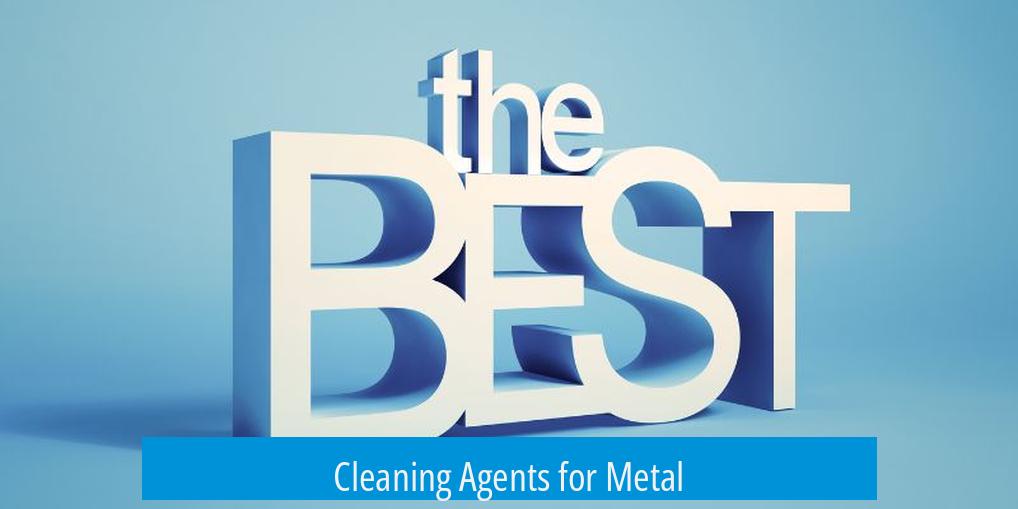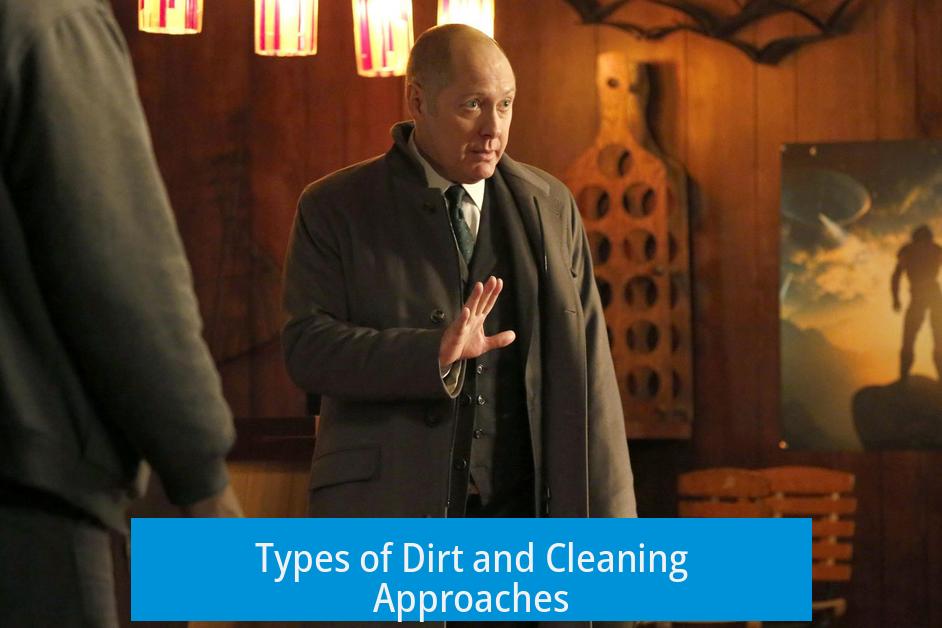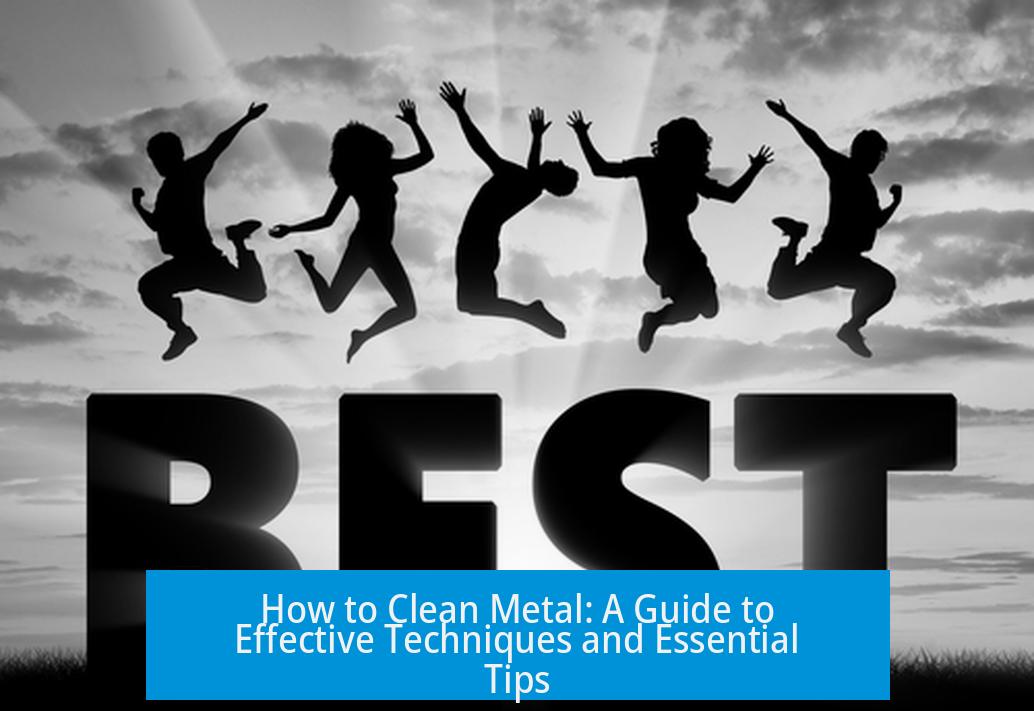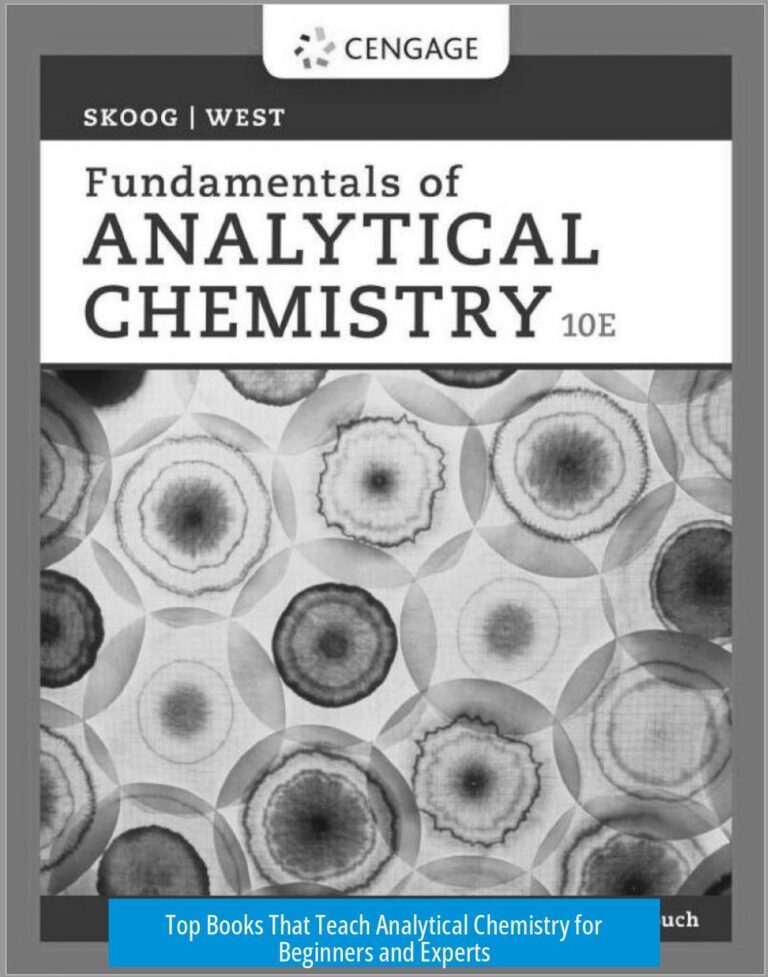How to Best Clean Metal

The best way to clean metal depends on the type of dirt and the metal surface involved. Using appropriate solvents and cleaning agents ensures effective removal of grease, oil, and dust without causing damage or corrosion.
Cleaning Agents for Metal

- Industry standard solvents include isopropanol, methanol, and acetone. These effectively remove light dirt and oils.
- Heavy grease or oil requires stronger solvents like petroleum ether or gasoline.
- Methyl ethyl ketone (MEK) offers an effective, low-toxicity option for grease removal and is easily available.
- Surfactants such as alcohol ethoxylates or alkyl polyglucosides aid in breaking down mixed dirt.
- Chelants like NTA or EDTA sodium salts can improve cleaning by binding metal ions and contaminants.
Types of Dirt and Cleaning Approaches

Organic dirt such as oils dissolve well in organic solvents, which leave no residue. Inorganic dirt like dust and metal oxides require surfactants to lift particles from the surface.
Soap or detergent mixed with water or alcohol can clean mixed dirt by combining solubilizing and emulsifying effects.
Residue Management

Surfactants and detergents leave residues after cleaning due to their non-volatile nature. Rinsing the metal with distilled water or a 30% alcohol-water mixture helps remove these residues and maintain sterility.
Water Quality and Corrosion Prevention

Distilled water is preferred for rinsing as it lacks ionic components that promote corrosion through electrolytic reactions. Using tap water can increase corrosion risks due to salts.
Formulating Effective Cleaning Solutions

- Including at least 30% ethanol or methanol inhibits microbial growth and adds disinfectant properties.
- The alcohol concentration should remain below 50% to maintain surfactant solubility.
- Optimizing solvent volatility is important; too rapid or too slow drying can cause streaks or residues.
Safety Measures
Strong solvents are flammable and emit vapors that require work in well-ventilated areas or outdoors. Gloves protect skin during prolonged use.
Post-Cleaning Protection
After cleaning raw steel, apply oil or paint to prevent rust formation. This step is critical for long-term metal preservation.
Key Takeaways
- Choose solvents based on dirt type: organic solvents for grease, surfactants for mixed dirt.
- Rinse with distilled water or alcohol mix to remove residues and reduce corrosion risk.
- Maintain solution alcohol levels at 30–50% for cleaning efficiency and antimicrobial effect.
- Use proper ventilation and protective gear to handle flammable solvents safely.
- Protect cleaned metal surfaces against rust by applying oil or paint.
How to Best Clean Metal? A No-Nonsense Guide for Shiny Results
Wondering how to clean metal for the best shine and long-term protection? You’re in the right spot. Cleaning metal well isn’t just about wiping it down—it’s science, art, and a pinch of care all rolled up. Let’s break down what works, what doesn’t, and how to keep your metal looking sleek without blowing your budget or patience.
Metal cleaning has got more layers than you might expect. You’ve got different dirt types, a toolbox of cleaning agents, residue worries, water quality’s sneaky role, and safety tips—because no one wants to look like the mad scientist of metal cleaning disasters.
Know Your Dirt: Organic or Inorganic?
First up, it’s critical to understand what you’re dealing with. Organic grime, like grease or oil, responds best to organic solvents. These bad boys—think isopropanol, methanol, acetone—are your go-to industry standard cleaners. They cut through grease cleanly and leave zero residue behind.
For inorganic dirt—dust, mineral deposits, and the like—solvents won’t cut it alone. That’s where a blend of soap or surfactants comes in handy. Combining dish soap with water or alcohol helps detach sticky mix soils including grease tinted with dust.
Got a greasy beast on your hands? Heavy-duty grease removal requires superheroes like pet ether or gasoline. But if you want something less toxic and more user-friendly, methyl ethyl ketone (MEK) is a fantastic alternative. It smells surprisingly like butterscotch—making your chemical chores smell like dessert (almost!). MEK is also affordable and available at your local hardware store, about $10 per quart.
Mix It Right: Cleaning Solutions That Work
Want to whip up a winning cleaning cocktail? Start with a surfactant, such as alcohol ethoxylates, at roughly 10% concentration. Pair them with at least 30% ethanol or methanol by volume. Adding alcohol has two perks: it prevents microbial growth in your solution and doubles as a disinfectant. No need for pure alcohol—less than 50% keeps your surfactant soluble and effective.
Don’t forget about chelants. Adding compounds like NTA or EDTA sodium salt helps snatch up stubborn metal ions and mineral buildup, enhancing cleaning power and preventing spots.
Rinse and Repeat: Tackling Residue After Cleaning
Cleaning with surfactants sounds perfect, right? But, here’s the catch: these molecules don’t just vanish. Surfactants and detergents are bulky and non-volatile. Without a proper rinse, they leave behind a film—trace streaks or haze ruins your sparkle.
Solution: a follow-up rinse with distilled water. Why distilled? Because tap water’s salt content speeds up metal corrosion by acting as an electrolyte. After using distilled water, you can optionally spray a 30% alcohol-water mix to keep things sterile and residue-free.
Water Matters: Fighting Off Metal Corrosion
Metal loves water like your smartphone loves a drop—until it leads to rust. The culprit is water’s ionic content—mainly salts—that help metals corrode by conducting electricity. Distilled water lacks these salts and is your metal’s best friend during rinsing.
Handle With Care: Safety First
Heads-up! Many cleaning agents, especially solvents like MEK, acetone, and pet ether, are flammable and toxic if inhaled in large amounts. Work outdoors or in a well-ventilated space.
Wear gloves if you’re scrubbing or soaking parts extensively—metal cleaning doesn’t have to turn into a skin irritation saga.
Post-Cleaning: Protect That Shine!
Your work doesn’t stop at clean—shiny metal’s next enemy is rust (hello, oxygen and moisture). For raw steel, coating it with oil or paint is essential to block rust formation. Oiling is quick and straightforward, creating a barrier that keeps rust at bay between uses.
Think about it— wouldn’t you want your sparkling metal gears, tools, or jewelry to stay pristine as long as possible?
Pro Tips for Best Results
- Test any new cleaning solution on a small, inconspicuous area first. Metals can be tricky—what shines on stainless steel might dull aluminum.
- Beware of drying speed. Too fast can leave streaks; too slow drags out residue. Tailor your drying method depending on your local environment.
- For mixed dirt, try mixing water with a touch of alcohol and a surfactant detergent to cover all bases.
Wrapping Up: Clean Smart, Shine Long
Cleaning metal isn’t a one-size-fits-all task. It demands the right tools for your dirt, smart mixes of solvents and surfactants, proper rinsing to nix residue, and post-clean protection against corrosion. And always respect safety guidelines to keep your hands and lungs happy.
With the right approach, metal cleaning can turn from chore to charm. Whether you restore grandma’s old silverware, polish your motorcycle’s chrome, or keep industrial equipment in peak shape, these tips will help you clean like a pro.
Got any favorite DIY cleaning hacks or metal mysteries? Share your stories—because every piece of metal has a tale worth telling (cleaned and gleaming, of course).
What cleaning agents work best for heavy grease on metal?
Use pet ether or gasoline for heavy grease or oil. Methyl ethyl ketone (MEK) is a low-toxicity option that also removes grease effectively.
How can I remove both organic and inorganic dirt from metal?
Organic solvents like isopropanol remove oil well but don’t clean dust. A mixture of soap or surfactants with water or alcohol can lift grease and dust together.
How should I handle residue after cleaning metal with surfactants?
Surfactants leave residues that need rinsing. Use distilled water or a 30% alcohol-water solution to wipe the surface clean and avoid leftover film.
Why is distilled water recommended for rinsing metal?
Distilled water lacks ions like salts that cause metal corrosion. Using it reduces rust risk during cleaning and rinsing.
Can metal cleaning solutions also disinfect the surface?
Yes. Adding 30% ethanol or methanol to surfactant solutions prevents microbial growth and creates a disinfectant effect without harming solubility.
What precautions should I take when using solvents like MEK or gasoline?
These solvents are flammable and produce fumes. Work outdoors or in ventilated areas and wear gloves to protect skin during extensive cleaning.





Leave a Comment